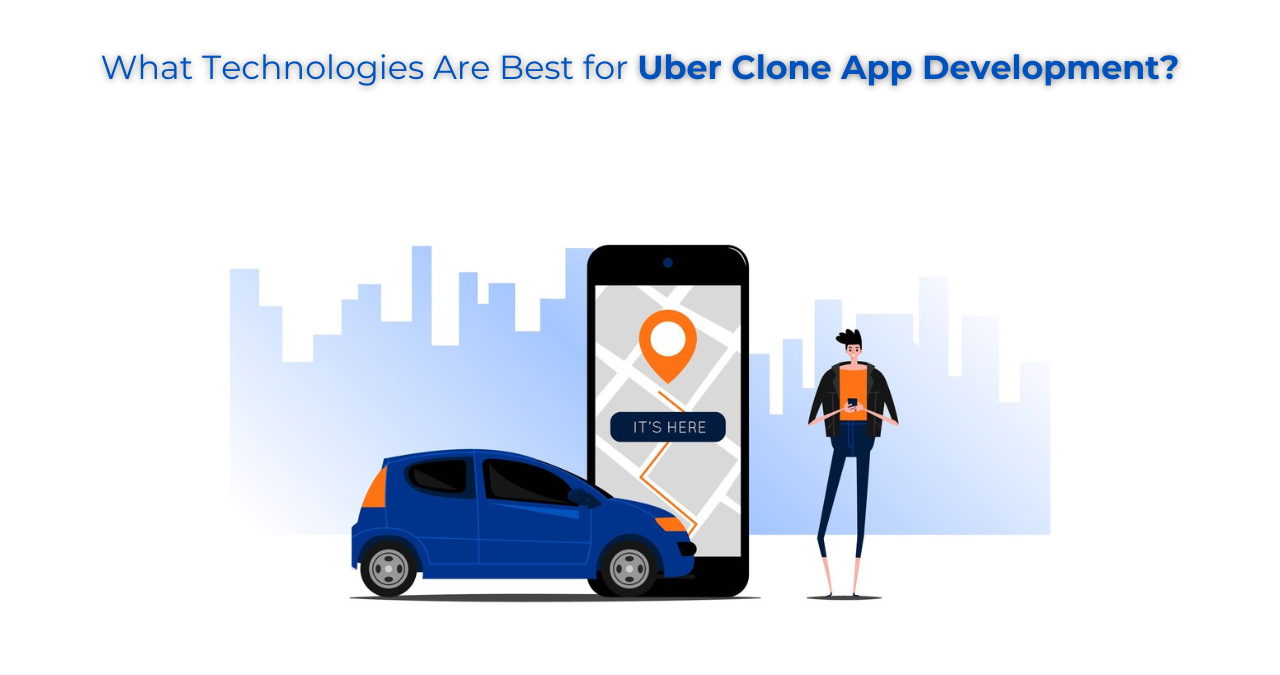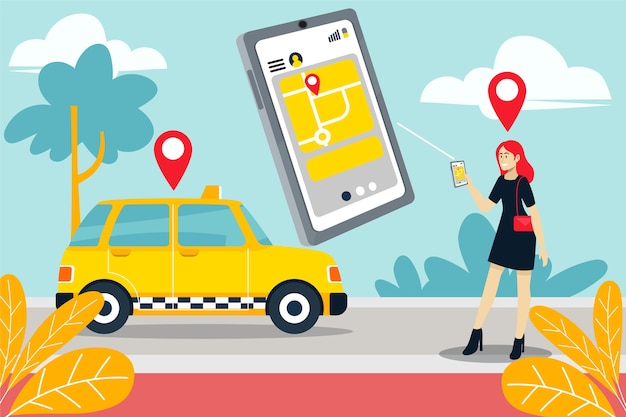What Technologies Are Best for Uber Clone App Development?

Developing an Uber clone app requires the integration of cutting-edge technologies to ensure seamless performance, scalability, and a superior user experience. Since ride-hailing apps operate in a dynamic environment, the right tech stack plays a crucial role in meeting customer demands, ensuring data security, and supporting business growth.
In this article, we’ll explore the best technologies for building an Uber clone app, breaking down the tech stack into essential components such as programming languages, frameworks, databases, and third-party integrations.
1. Frontend Development Technologies
The frontend of your Uber clone app development is what users interact with. A visually appealing, intuitive, and responsive interface is crucial to ensure a positive user experience for both riders and drivers.
Recommended Technologies:
- React Native: A popular framework for building cross-platform apps. It allows developers to write a single codebase that works on both iOS and Android, reducing development time and costs.
- Flutter: Google’s open-source UI toolkit, known for its fast performance and customizable widgets, is another excellent option for creating seamless, cross-platform user experiences.
- Swift (iOS): If you’re building a native app for iOS, Swift is the best programming language due to its speed, safety, and ease of integration with Apple’s ecosystem.
- Kotlin (Android): For native Android apps, Kotlin offers modern features, improved performance, and excellent compatibility with Java.
Why These Technologies?
- Enable faster development with cross-platform compatibility.
- Deliver a native-like experience for users on both iOS and Android.
- Support high-quality, scalable designs with rich user interfaces.
2. Backend Development Technologies
The backend is the powerhouse of your Uber clone app, responsible for managing user data, processing requests, and ensuring smooth communication between the frontend and database.
Recommended Technologies:
- Node.js: A lightweight and scalable runtime environment ideal for real-time applications like ride-hailing apps. It handles multiple simultaneous requests efficiently.
- Ruby on Rails: Known for its simplicity and speed, Ruby on Rails is great for building robust backend systems quickly.
- Python with Django or Flask: Python’s frameworks are powerful, scalable, and suitable for handling complex business logic and APIs.
- Java with Spring Boot: For developers familiar with Java, Spring Boot is an excellent choice for creating secure and scalable backend systems.
Why These Technologies?
- Support real-time features like ride tracking and notifications.
- Handle high traffic and concurrent requests effectively.
- Enable rapid development with secure and reliable codebases.
3. Database Technologies
Databases store and manage all the app’s critical data, including user profiles, ride history, payment details, and location data. A well-chosen database ensures fast access to data and smooth app performance.
Recommended Databases:
- PostgreSQL: A powerful relational database that’s reliable, scalable, and supports complex queries.
- MongoDB: A NoSQL database that offers flexibility and high performance, especially for apps with unstructured data.
- Firebase Realtime Database: Ideal for real-time applications, it provides seamless synchronization between the app and the server.
- MySQL: A widely-used relational database system known for its reliability and simplicity.
Why These Databases?
- Provide fast data retrieval and storage for real-time updates.
- Scale easily as the app grows and user demand increases.
- Handle structured and unstructured data efficiently.
4. Geolocation and Mapping Technologies
Geolocation is a cornerstone of any ride-hailing app, enabling features like real-time ride tracking, route optimization, and fare estimation.
Recommended Technologies:
- Google Maps API: The gold standard for mapping, offering precise location tracking, route navigation, and geofencing capabilities.
- Mapbox: An alternative to Google Maps, providing customizable maps and robust geolocation features.
- OpenStreetMap: A free, open-source mapping platform suitable for cost-conscious businesses.
- Core Location (iOS) and LocationManager (Android): Native tools for accessing GPS and geolocation data on iOS and Android devices.
Why These Technologies?
- Provide accurate and real-time location tracking.
- Enhance route optimization and navigation.
- Support additional features like traffic updates and geofencing.

5. Payment Gateway Integration
Seamless payment processing is essential for user satisfaction. A secure and reliable payment gateway ensures fast and safe transactions.
Recommended Payment Gateways:
- Stripe: Known for its security, scalability, and support for multiple payment methods.
- PayPal: A globally trusted platform that supports quick integration and user-friendly interfaces.
- Braintree: A division of PayPal, Braintree supports credit cards, digital wallets, and global currencies.
- Razorpay: Popular in India, offering features like recurring payments and subscriptions.
Why These Gateways?
- Ensure secure payment processing with encryption.
- Support multiple payment methods, including credit cards, wallets, and UPI.
- Provide easy integration with minimal downtime.
6. Real-Time Communication Tools
Real-time communication is essential for ride-hailing apps, enabling features like driver-rider chat, notifications, and ride updates.
Recommended Technologies:
- Socket.IO: A JavaScript library for real-time, bidirectional communication between the server and app.
- Firebase Cloud Messaging (FCM): A reliable solution for push notifications and in-app messaging.
- Twilio: Ideal for SMS, voice, and chat integration.
- Pusher: Great for building real-time features like ride updates and live chat.
Why These Tools?
- Enable instant communication between drivers and riders.
- Provide reliable notification systems to keep users informed.
- Enhance user engagement with real-time updates.
Read More: Unveiling the Success Secrets of the Ola Business Model
7. Cloud Services and Hosting
Scalability and uptime are crucial for the success of your Uber clone app. Cloud services provide the infrastructure needed to handle growing user demand.
Recommended Cloud Platforms:
- Amazon Web Services (AWS): Offers robust scalability, security, and a wide range of services tailored for app hosting.
- Google Cloud Platform (GCP): Known for its powerful tools, including data analytics and machine learning integration.
- Microsoft Azure: Provides flexible hosting options and seamless integration with other Microsoft tools.
- DigitalOcean: A cost-effective solution for smaller businesses with straightforward hosting needs.
Why These Platforms?
- Ensure high uptime and reliability.
- Provide scalable solutions for growing businesses.
- Offer advanced features like load balancing and automated backups.
8. Security Technologies
Security is non-negotiable for ride-hailing apps. Users need to trust that their personal and payment information is safe.
Recommended Security Measures:
- SSL/TLS Encryption: To secure data transmitted between the app and server.
- OAuth 2.0: For secure user authentication and authorization.
- Two-Factor Authentication (2FA): Adds an extra layer of security for user accounts.
- Data Masking and Tokenization: Protect sensitive user and payment data.
Why These Measures?
- Protect user data and prevent unauthorized access.
- Build trust with users, which is crucial for long-term success.
- Comply with data protection regulations like GDPR and CCPA.
Conclusion
Building a successful Uber clone app requires the right combination of technologies that ensure scalability, performance, and user satisfaction. From frontend tools like React Native and Flutter to backend systems like Node.js and Python, each element of the tech stack plays a vital role in creating a robust, user-friendly app.
Partnering with a reliable clone app development company can streamline the development process, ensuring that the right technologies are used to meet your business needs. By investing in proven tools and frameworks, you can create a feature-rich Uber clone app that stands out in the competitive ride-hailing market.
- Art
- Causes
- Crafts
- Dance
- Drinks
- Film
- Fitness
- Food
- الألعاب
- Gardening
- Health
- الرئيسية
- Literature
- Music
- Networking
- أخرى
- Party
- Religion
- Shopping
- Sports
- Theater
- Wellness



